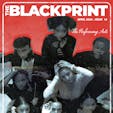BY: TAINAYA NASH

Capital Bikeshare is a popular form of transportation in Washington, D.C. with over 450 stations, yet it has been having difficulty reaching minority customers and increasing minority ridership.
"It's one of the most cost effective, least expensive ways to get around," Jim Sebastian said, the District Department of Transportation's associate director.
In 2016, Capital Bikeshare released their member survey report which revealed that it is attaining low minority ridership.
"In D.C. when it first launched... it did skew towards a more male, white population," Sebastian said of Capital Bikeshare.
According to the company survey, white people make up 45 percent of area workers yet account for 80 percent of Capital Bikeshare members.
"There's a lot of things that we do here to try and reverse some bad policies from 60, 70 years ago," Aaron Zimmerman said, an urban planner for the Capitol Riverfront, a neighborhood that is looking to build a new downtown area along the Anacostia River.
Zimmerman helps businesses such as Capital Bikeshare plan and construct docking stations to ensure that they benefit everyone in the community.
However, when you compare the number of bike stations at American University, a predominantly white institution, to Howard University, a historically black university, you'll find that American has more bike stations.
According to Capital Bikeshare's virtual bike station map, the American University Park neighborhood has five bike stations; Howard University has two bike stations located directly outside of its campus with an additional bike station at a dormitory no longer used by students. The disproportionate number of bike stations offered in high and low-income areas shows the lack of access minorities have to Capital Bikeshare.
Charles Brown, a transportation expert and senior researcher at Rutgers University, said that bike-share programs like Capital Bikeshare are having a hard time reaching minority and low-income consumers. This is due to of the lack of awareness of the program and the placement of the bike docking stations.
In 2016, Brown published research on bicycle programs that detailed some of the barriers to bicycle use in the black and hispanic neighborhoods.
Brown said that typically, bikeshare systems are placed in a business district where they are likely to attract a tourist or a business professional and less likely to attract a minority or low-income individual.
In addition, Brown said that bikeshare systems don't take into account cultural differences. Not everyone within the minority community will want to use a bike for transportation purposes; some just want to use the bikes for fun or leisure activities.
Months after the 2016 company survey was released, Capital Bikeshare started a community partnership program. This program is meant to be a vehicle to increase accessibility and awareness among people that would benefit the most from a bikeshare membership. The Community Partners Program is for nonprofits, government agencies and social service organizations within Arlington, Virginia, and the District.
In order for individuals to benefit from this program, they must be affiliated with one of Capital Bikeshare's partner programs. If they have no affiliation, but are part of a low-income community, they cannot receive any benefits from this program.
The benefits include: a reduced membership fee of $5, an additional 60 minutes added to all rides, a free helmet, an introduction to the bikeshare system, instructions on how to use the stations and free city cycling classes with the Washington Area Bicyclist Association.
Lucas said, that the Community Partners Program has helped increase minority ridership by providing people with the tools and knowledge needed to feel comfortable using Capital Bikeshare.
When Lester Wallace, the community outreach coordinator for Capital Bikeshare and manager of the Community Partners Program, joined Capital Bikeshare they had six or seven community partners with a total of about 100 to 150 people.As of now, there are almost 30 partner organizations in the program and a total of more than 1,300 members.
If there is an organization serving low-income people they have the option to contact Capital Bikeshare and express interest in the Community Partners Program.
Capital Bikeshare also hired Wallace as a community outreach coordinator to help increase minority ridership by informing them of what Capital Bikeshare is and how it can help them.
According to Wallace, they attend a multitude of community events including local neighborhood events and Advisory Neighborhood Commission meetings.
Wallace believes that for Capital Bikeshare to do better, it has to hear what the community has to say.
Wallace also said that one of Capital Bikeshare's greatest challenges is facing the "physical elements" of diverse communities. Many minority communities within the district have steep hills that deter people from wanting to ride bikes. He hopes that the implementation of their e-bikes will help tackle this problem and provide a solution for minorities that live in these communities and would like to use the bikeshare service.
"There are a lot of minorities that are biking, and I believe that the dockless system has shown us that there is a desire in minority communities to bike," said Veronica Davis, a transportation consultant at Nspire Green, a consulting company.
In addition to this program, the District Department of Transportation has created an initiative in partnership with Capital Bikeshare called goDCgo. The program encourages people to use sustainable forms of transportation, such as walking, biking and taking public transit. The goal of this initiative is to provide residents, commuters and visitors with the education needed to make sustainable choices about transportation to improve air and life quality in the district.


